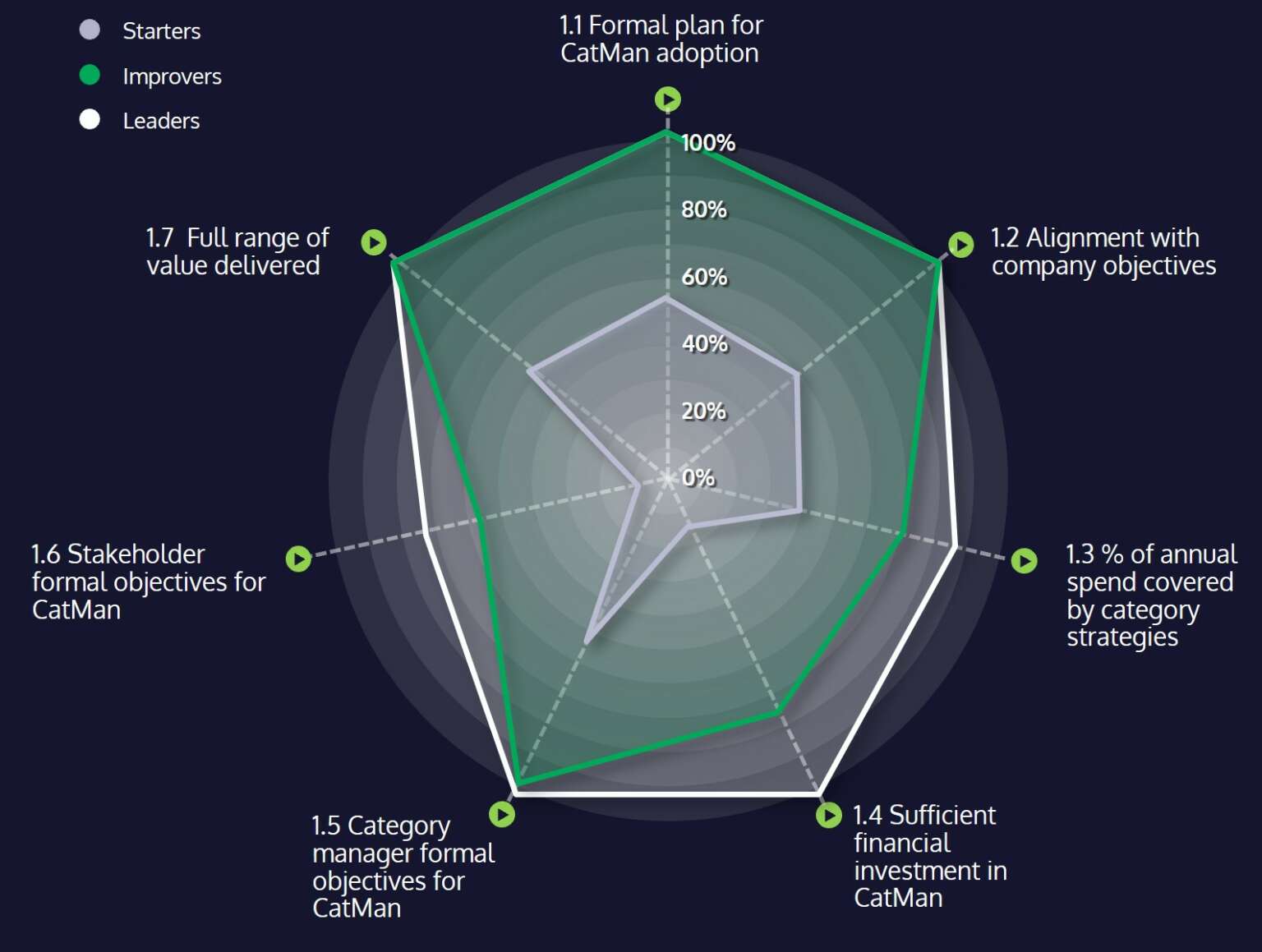
Category management report
Category management strategy – Why is it important?
By Future Purchasing |
A category management strategy considers how category management fits into the overall organisational strategy, operating model and ways of working.
It explores how well aligned it is with the organisation’s strategic direction, how much spend it influences, how much investment is required to deliver on its promised benefits, how well applied are the value levers and whether there is a clearly written formal plan to adopt category management within the organisation.
The importance of category management strategy
Before introducing category management to your organisation, it is imperative that you think through how the organisational strategy will be impacted by category management.
There are a number of fundamental elements involved in creating a strategy of category management adoption.
First of all, it is necessary to align category management to the organisational strategic objectives. Is the main objective around new product development and innovation, or is the focus on being cost-competitive?
Second is to create a vision for category management with ambitious target benefits and ROI to drive the right behaviours in the organisation.
Third is to design a category management programme with a summary change plan, strategic metrics and also some personal objectives and incentivisation to create the right environment for change.
Fourth is to understand the overall spend segmentation and taxonomy plus being clear on how much spend should be scrutinised through category management.
What our global category management survey tells us about category management strategy
In summary
The overall score for category management strategy across all respondents has increased significantly from 41% to 50% compared with the 2019-20 survey.
The highest scores were Q1.1 at 64% asking whether respondents had a category management adoption plan and Q1.7 at 63% asking whether respondents used the full range of value levers. These are positive indicators that organisations realise the importance of planning and applying the full range of value levers to their category strategies.
The lowest score was for Q1.6 at 20% about business stakeholders having formal category management objectives. Leaders and improvers have increased their scores whereas starters have dropped from 15% to 9%.

Key recommendations
Leaders v Starters performance gap
1. Align category management with the organisation’s strategic objectives by analysing business unit objectives and integrating with the budget planning cycle.
2x
2. Secure sufficient financial investment in category management to deliver the organisation’s expectations by creating a business case that identifies realistic costs and benefits.
7x
3. Agree formal category management objectives with business stakeholders covering annual budget targets, category group level targets and individual category specific targets.
9x
4. Set formal category management objectives for category managers that include strategy coverage, spend influenced and value delivery in terms of savings, risk, revenue and stakeholder value. (Quick Win)
2x
Let’s Talk
If you want to get more value out of your procurement spend, or you just want to know more about us, request a callback above or send us an email and we will come straight back to you.




